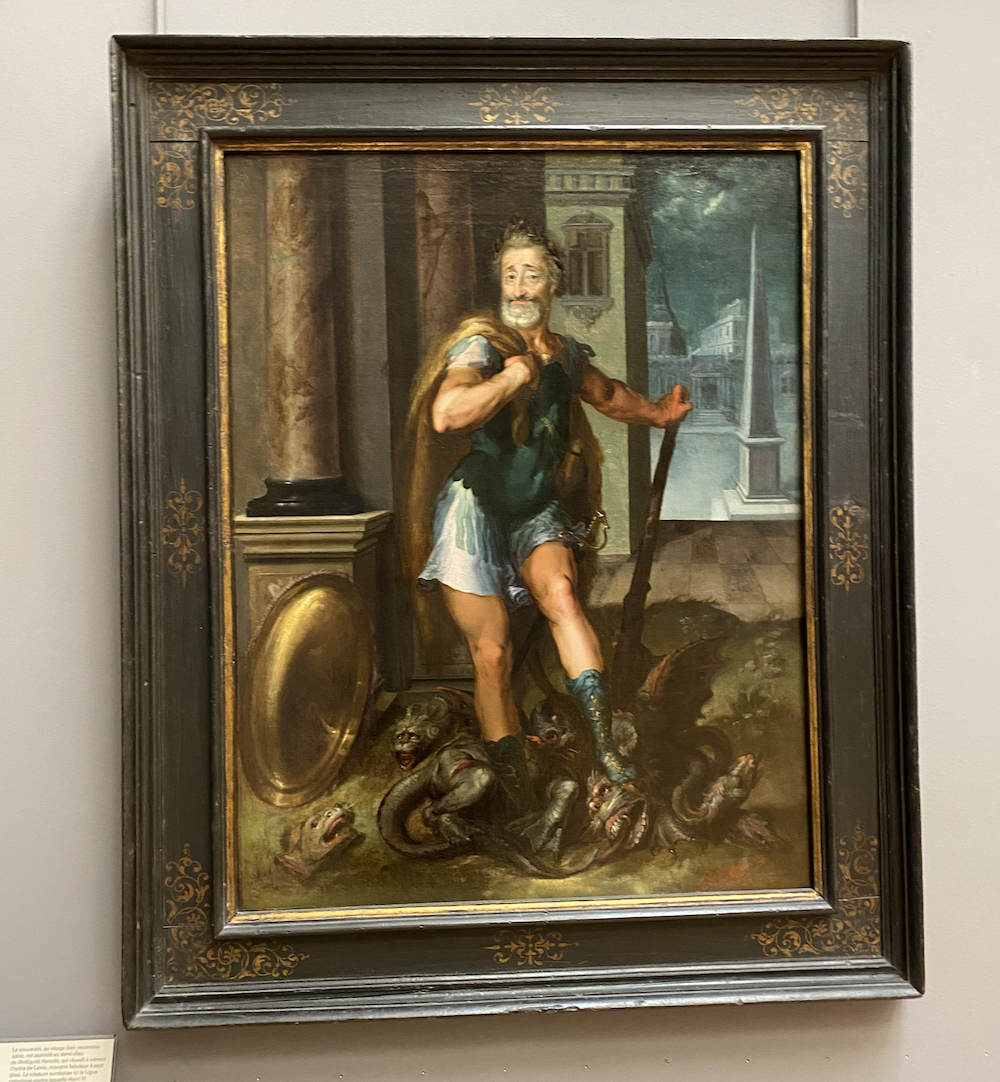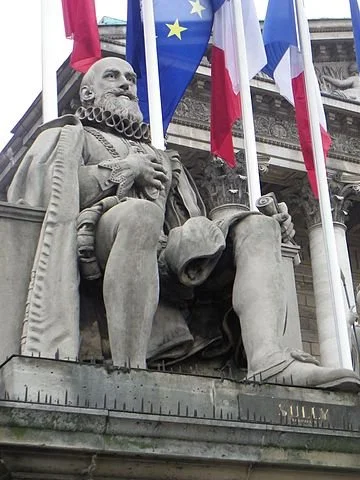There are thousands of figures in French history, but a few of them stand out a little brighter and larger. Henri IV was just such a character and today we celebrate his birthday along with a very close friend of his.
Of all the French kings, one face stands out among the rest as the most recognizable. Henri IV, the Vert Galant, the first Bourbon king always has a happy and almost goofy but lovable look to him whether he is on a horse overlooking the Pont Neuf or staring back at you in the Louvre.
One of my favorite (yes I say that about some 5,000 paintings) in the Louvre is the one depicting Le Bon Roi Henri as Hercules with some rather lovely legs. PORTRAIT D’HENRI IV EN HERCULE TERRASSANT L’HYDRE DE LERNE, by the Entourage de Toussaint Dubreuil in 1600 shows the king as the mythological hero known for his strength. Seen with the pelt of a lion over his shoulders, a slight smile on his face, and holding a club in his hand as he stands over a multi-head monster.
Henri IV born on this day in 1553, Henri III future King of Navarre and France was baptized a Catholic but raised as a Protestant by his mother Queen Jeanne d’Albret
At the moment of his birth his grandfather King of Navarre Henri d’Albret took him from his daughter and rubbed his lips with garlic and gave him a small sip of wine grown from his own vineyard. Known as a Bearnais Baptism, it was to ward off any disease but to also indoctrinate him into their way of life.
As the King of Navarre, Henri married Marguerite de Valois, daughter of Henri II and Catherine de Medici who were devout Catholics. Days after their wedding the St. Bartholomew Day massacre began killing thousands of Protestants and the War of Religion that would spread through France for thirty-six years.
The painting depicts the King standing triumphantly over the slain l’hydre de lerne, which represents the Catholic League that had big problems with the one-time Huguenot king. However, what stands out about this painting is his legs. I mean, really, oh la la Henri la Grande, the little flick of the hip adds to his pose and it is easy to see why he may have had so many mistresses. After all, he wasn’t nicknamed the Vert Galant for nothing.
Six years later on the same day in Rosny-sur-Seine Maximillian de Bethune, duc de Sully was born. Maximilian met Henri in 1572 and became fast friend and one that Henri would lean on for the rest of his life. A fellow protestant he was able to flee Paris hours before the Saint Bartholomew days massacre and later encouraged Henri to convert to Catholicism to ease tensions in the country.
Sully was always near Henri for every crusade and battle and later in the government. Starting in the State Council of Navarre to the Superintendent of Finance and the Governor of the Bastille and the Superintendent of the King’s buildings. In the government, he changed laws to tax the aristocracy and lowered taxes on the lower class who was loved by many.
On May 14, 1610, just a day after the coronation of Marie de Medicis, Henri was leaving the Palais du Louvre and on his way to the Arsenal district to see his old friend. On the way, the king was murdered and as soon as the news reached Sully he hurried to his side.
Today in Paris there are more reminders of Sully than there are of Henri IV. Henri has his statue on the Pont Neuf. However, Sully can be found in front of the Palais Bourbon, a street in the Arsenal where he once lived. The Hotel de Sully he purchased after the loss of his friend and at the Louvre. In the Cour Napoleon overlooking the pyramid stands Sully but the entire middle wing is dedicated to the statesman. The Sully wing is where you can find the French paintings but it is also the original section of the Palais we see today, built by his friend Henri IV.





